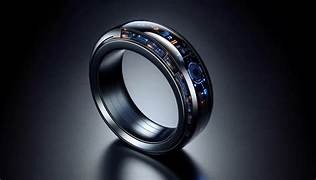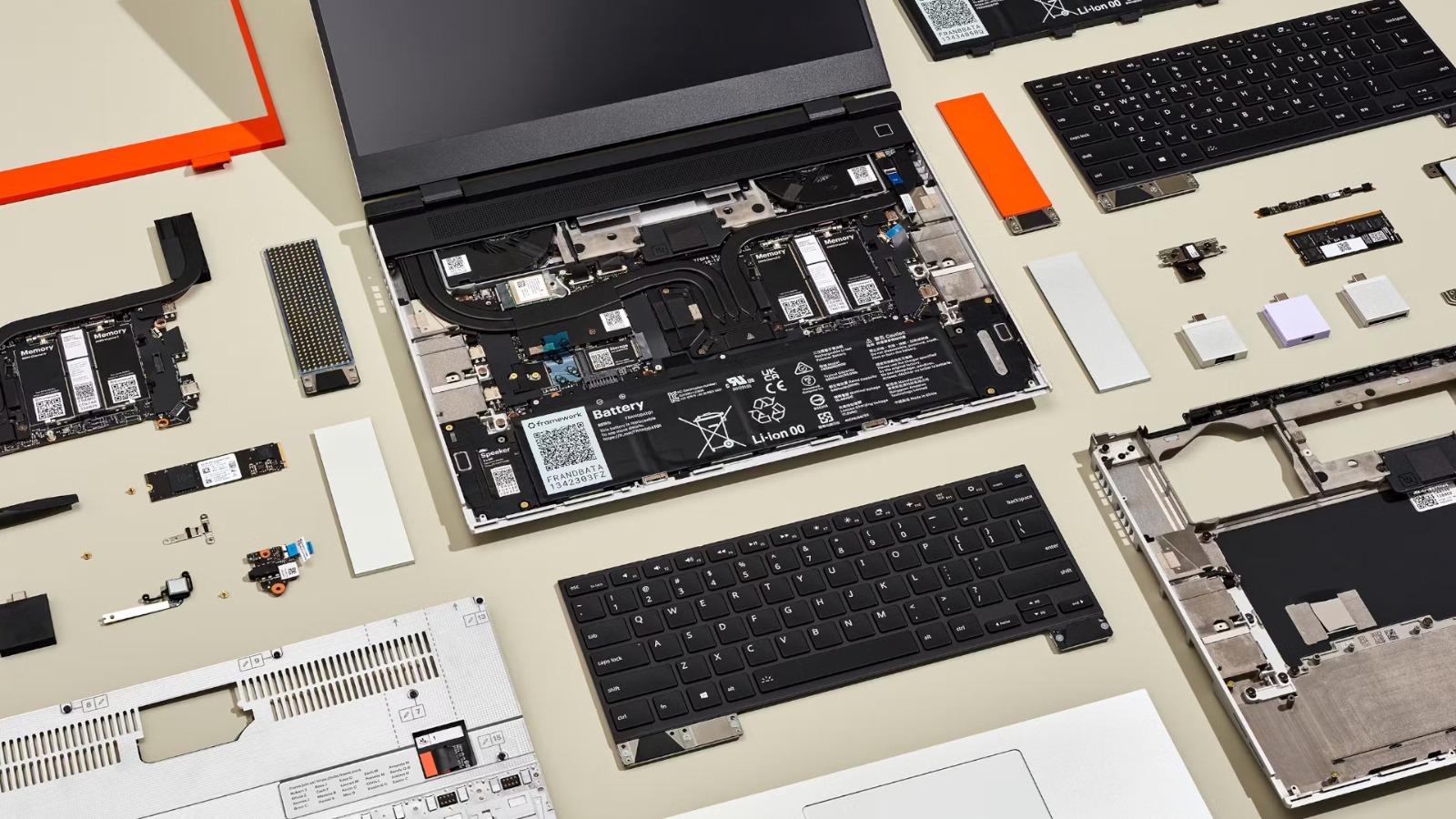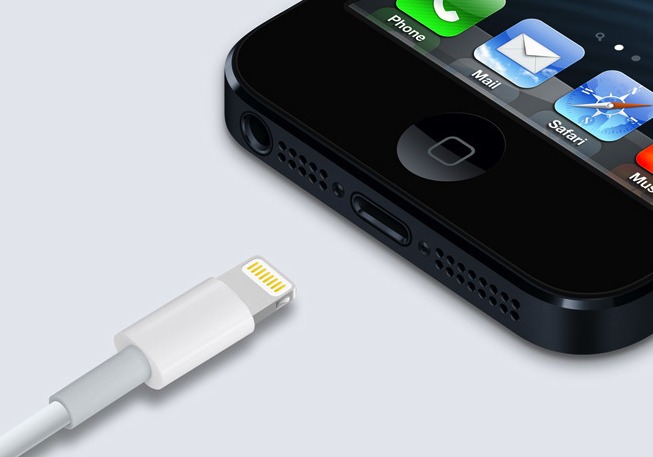
Wearable Tech 3.0: From Smartwatches to Smart Rings.
“Exploring Wearable Tech 3.0: From bulky smartwatches to sleek smart rings, the latest generation of wearables integrates AI, advanced biosensors, and seamless connectivity to track health, optimize fitness, enhance productivity, and personalize lifestyle management, while balancing style, convenience, and privacy, signaling a transformative shift in how humans interact with technology and their own bodies every day.”
✨ Raghav Jain

Introduction: The Evolution of Wearable Technology
Wearable technology has come a long way from the early days of basic pedometers and step counters. What started as simple fitness trackers has now evolved into a full-fledged technological revolution—Wearable Tech 3.0. The latest generation of wearable devices no longer just tracks activity or health data; they actively integrate artificial intelligence, biometrics, and real-time analytics to enhance human potential. Today, wearable tech has shrunk in size, expanded in capability, and become more personal than ever—transitioning from smartwatches to smart rings, smart clothing, implantable sensors, and even brain-computer interfaces.
This article explores the journey of wearable technology, its innovations, the rise of smart rings, and how the future of wearables will redefine health, productivity, and human connection.
The Journey So Far: From Fitness Trackers to Smart Ecosystems
The earliest wearable devices were simple step counters and heart-rate monitors, often worn as chest straps or clip-on devices. Then came smartwatches, like the Fitbit, Apple Watch, and Samsung Galaxy Watch, which revolutionized the idea of wearables. They combined health monitoring, communication, entertainment, and convenience in a single wrist-based gadget.
Smartwatches marked the Wearable Tech 2.0 phase—devices capable of continuous tracking, connecting to smartphones, and offering real-time insights. They measured metrics like:
- Heart rate variability (HRV)
- Oxygen saturation (SpO2)
- Sleep quality
- Stress levels
- GPS-based activity tracking
However, as users sought smaller, more discreet, and more personalized wearables, innovation started moving away from the wrist toward rings, eyewear, and even clothing.
Wearable Tech 3.0: A New Era of Integration and Intelligence
The third generation—Wearable Tech 3.0—is characterized by miniaturization, AI integration, and continuous connectivity. These devices no longer just track; they predict, advise, and even intervene.
Key features defining Wearable Tech 3.0 include:
- Miniaturization – Hardware has become tiny enough to fit into rings, earbuds, and even textiles.
- AI Integration – Devices now learn user behavior, offering adaptive health insights and predictive analytics.
- Bio-sensing Advancements – New sensors measure hydration, glucose levels, temperature, and even mood indicators.
- Seamless Connectivity – Wearables now sync across devices and ecosystems, integrating with smartphones, cloud storage, and IoT systems.
- Fashion-First Design – Aesthetics are now as important as functionality, merging luxury design with advanced tech.
Smartwatches: The Gateway to the Wearable Revolution
Smartwatches remain at the heart of wearable evolution. With advanced features like ECG monitoring, blood pressure tracking, and even fall detection, they’ve become essential wellness companions.
Recent innovations in smartwatches include:
- Apple Watch Ultra & Series 9: Introducing double-tap gestures, emergency SOS, and temperature-based ovulation tracking.
- Samsung Galaxy Watch 6: Focus on sleep insights and bioactive sensors for advanced metabolic tracking.
- Garmin & Polar Devices: Catering to professional athletes with precision-based fitness metrics and offline mapping.
Beyond health, smartwatches are also transforming mobile payments, navigation, and safety, making them indispensable everyday devices. Yet, as useful as they are, many users crave something smaller and subtler—a gap now being filled by smart rings.
The Rise of Smart Rings: Compact Intelligence at Your Fingertips
Smart rings represent the next phase in wearable innovation—powerful, discreet, and always connected. These compact devices can track a surprising range of health and lifestyle metrics while looking just like stylish jewelry.
Key Players in the Smart Ring Market
- Oura Ring – The pioneer of health-focused rings, tracking sleep, heart rate, temperature, and readiness scores.
- Ultrahuman Ring Air – An Indian innovation emphasizing metabolic health and glucose insight through integration with continuous glucose monitors (CGMs).
- RingConn – Focused on stress tracking and seamless app synchronization without a subscription model.
- Samsung Galaxy Ring (Upcoming) – Expected to bring mainstream smart ring adoption by integrating with the Galaxy ecosystem.
What Makes Smart Rings Special?
Unlike watches, smart rings are lightweight, non-intrusive, and energy-efficient. They can be worn 24/7 without discomfort and require minimal charging. Many feature titanium or ceramic bodies, combining durability with luxury aesthetics.
Their key functions include:
- Sleep tracking with precision comparable to medical-grade sensors
- Heart rate and HRV monitoring
- Body temperature variation detection (helpful for illness or fertility tracking)
- Activity and calorie tracking
- Contactless payments (in some models)
Smart rings can even act as digital keys—unlocking smartphones, cars, or smart home devices through NFC connectivity.
Beyond Rings: The Expanding Universe of Wearable Tech 3.0
The future of wearable tech extends beyond wrists and fingers. Innovations are embedding technology directly into clothing, eyewear, and even skin.
1. Smart Clothing
Wearable fabrics embedded with conductive threads can track posture, muscle activity, and temperature. Companies like Hexoskin and Under Armour are integrating biosensors into athletic apparel, enabling precise training data collection.
2. Smart Eyewear
The once futuristic concept of AR glasses is becoming a reality. Devices like Meta Ray-Ban Smart Glasses and Apple Vision Pro are merging fashion with function—offering real-time recording, navigation, and augmented reality overlays.
3. Implantable and Skin-Based Wearables
Tiny sensors implanted under the skin or adhered like tattoos can monitor glucose levels, hydration, and hormone fluctuations continuously. These “invisible wearables” represent the next frontier in personalized healthcare.
4. Smart Earbuds (Hearables)
Hearables like Apple AirPods Pro and Sony LinkBuds go beyond audio—they can track heart rate, head movement, and even stress levels through voice biometrics.
Applications Across Industries
Wearable Tech 3.0 is influencing nearly every sector:
- Healthcare – Continuous health monitoring aids in early disease detection, remote patient care, and personalized medicine.
- Fitness and Sports – Athletes use advanced sensors to optimize training, recovery, and performance.
- Workplace Productivity – Smart wearables enhance ergonomics, reduce fatigue, and monitor employee wellness.
- Safety and Security – Wearables with GPS and SOS functions improve personal safety and can alert authorities in emergencies.
- Fashion and Lifestyle – Luxury brands like Gucci and Tag Heuer now integrate smart tech into accessories, blending elegance with digital intelligence.
Challenges and Ethical Concerns
Despite their promise, wearable devices raise several ethical, privacy, and security issues.
- Data Privacy – Continuous tracking means constant data collection. Misuse or leaks of biometric data can have serious consequences.
- Health Data Accuracy – Consumer-grade devices may sometimes give inaccurate readings, leading to false alarms.
- Over-Reliance on Technology – Users might depend excessively on wearables, neglecting intuitive understanding of their own health.
- Battery and Sustainability Issues – Frequent charging and electronic waste from outdated models remain environmental concerns.
To address these challenges, companies are investing in secure cloud storage, anonymized data handling, and AI-based calibration to improve sensor precision.
The Future of Wearable Tech: Toward Human-Device Symbiosis
The next decade will see wearable technology evolve from mere accessories to extensions of the human body. Future developments may include:
- AI-powered emotion recognition wearables capable of adjusting environments based on mood.
- Neural wearables that connect brain signals with digital interfaces.
- Energy-harvesting wearables powered by body heat or motion.
- Biofeedback-driven performance optimization for athletes and professionals.
- Metaverse integration, enabling seamless interaction between physical and digital identities.
Wearable Tech 3.0 is moving toward invisibility—devices that blend so seamlessly into daily life that we forget they’re there.
Wearable technology has undergone a dramatic evolution over the past two decades, transforming from simple pedometers and fitness trackers into highly sophisticated, AI-powered devices that integrate seamlessly into daily life, offering insights into health, activity, and even personal productivity in ways that were once considered science fiction, and as we step into the era of Wearable Tech 3.0, the scope and ambition of these devices have grown exponentially, moving beyond the limitations of smartwatches to include smaller, subtler, and more intelligent devices like smart rings, which combine the discreet nature of jewelry with powerful health-tracking capabilities, allowing users to monitor sleep patterns, heart rate variability, body temperature, stress levels, and even readiness scores without the bulk of a wrist-worn device, and as these rings have emerged as the next frontier in wearable innovation, they not only provide users with valuable data but also employ advanced algorithms to analyze and interpret these metrics, offering personalized recommendations and predictive insights that can help individuals optimize their physical performance, mental wellness, and overall lifestyle choices, while simultaneously integrating with broader digital ecosystems that include smartphones, cloud-based platforms, and IoT devices, creating a fully interconnected environment where data flows seamlessly and actionable insights are delivered in real time, and yet, despite their diminutive size, smart rings are capable of performing functions that rival traditional smartwatches, such as contactless payments, gesture-based controls, notifications, and even acting as digital keys for unlocking phones, cars, or smart home devices, which underscores the incredible potential of miniaturization in wearable technology and reflects a broader trend toward devices that are not just functional but also aesthetically pleasing, blending fashion and technology in ways that encourage 24/7 usage without compromising comfort or style, and this evolution is not limited to rings alone; it encompasses smart clothing embedded with sensors that track muscle activity, posture, and temperature; smart eyewear capable of AR integration and real-time recording; hearables that monitor biometrics and stress levels; and even implantable or skin-adhered devices that continuously measure glucose, hydration, or hormone levels, indicating that Wearable Tech 3.0 is rapidly becoming a pervasive extension of the human body, capable of delivering personalized healthcare insights, enhancing athletic performance, optimizing workplace productivity, and even improving safety by providing real-time alerts or location tracking, yet, alongside these remarkable advancements come critical challenges related to data privacy, security, device accuracy, sustainability, and the potential psychological effects of over-reliance on continuous monitoring, and addressing these challenges requires a careful balance of innovation and regulation, ensuring that wearables empower users with meaningful and actionable information without compromising their privacy or autonomy, and as AI and sensor technology continue to advance, we can anticipate a future where wearable devices become virtually invisible, fully integrated into clothing, accessories, or even directly with the human body, harnessing energy from motion or body heat, analyzing emotional states to adjust environments, and potentially interfacing with neural networks to bridge the gap between thought and action, thereby transforming not just how we monitor health but how we interact with technology itself, ultimately moving toward a world where the boundary between humans and devices is blurred, where technology anticipates our needs, enhances our abilities, and supports our well-being in a continuous, seamless loop, creating a paradigm shift in the way we think about personal technology, lifestyle management, and self-optimization, all while maintaining a strong emphasis on design, usability, and ethical considerations to ensure that these powerful tools serve humanity rather than exploit it, making the journey from smartwatches to smart rings not just a technological progression but a profound evolution in how we live, work, and interact with the digital and physical worlds simultaneously.
Wearable technology has evolved from its humble beginnings as basic pedometers and simple step counters into an intricate and highly sophisticated ecosystem of devices capable of monitoring a wide range of human activities, biometrics, and environmental interactions, and as we enter the era of Wearable Tech 3.0, this evolution has shifted toward devices that are smaller, smarter, more discreet, and more deeply integrated into our daily lives, moving beyond the wrist-centric smartwatch to include devices like smart rings, smart clothing, smart eyewear, hearables, and even implantable or skin-adhered sensors that collectively aim to create a seamless interface between humans and technology, and at the forefront of this evolution, smart rings have emerged as an innovation that combines compactness, convenience, and high-tech functionality, enabling users to track heart rate, heart rate variability, sleep quality, oxygen saturation, body temperature, stress levels, activity, calories burned, and in some cases even reproductive health markers such as ovulation cycles, all while maintaining a stylish and inconspicuous form factor that resembles traditional jewelry rather than a gadget, and the intelligence of these devices extends beyond mere data collection, as they integrate artificial intelligence algorithms to analyze patterns, provide predictive insights, and deliver actionable recommendations, effectively transforming raw biometric data into practical guidance that can improve health, wellness, fitness, productivity, and overall lifestyle management, and the significance of miniaturization in this context cannot be overstated, because the smaller the device, the more consistently it can be worn, allowing for continuous 24/7 monitoring without discomfort or interruption, which is a crucial factor in achieving accurate health tracking and generating meaningful insights, and companies like Oura, Ultrahuman, and RingConn have pioneered this segment, offering devices that pair with companion apps to provide users with holistic insights, daily readiness scores, detailed sleep analysis, stress management guidance, and even suggestions for activity, recovery, and mental well-being, thereby creating a feedback loop that encourages proactive lifestyle changes rather than reactive interventions, and while smart rings are a major innovation, Wearable Tech 3.0 also encompasses smartwatches, which remain highly popular due to their versatility, multifunctionality, and integration into smartphone ecosystems, providing users with notifications, contactless payments, GPS navigation, emergency alerts, and fitness tracking, while devices like the Apple Watch, Samsung Galaxy Watch, Garmin, and Fitbit have continually evolved to include advanced sensors such as ECG, blood oxygen monitoring, fall detection, temperature tracking, and sleep monitoring, offering a broad spectrum of health insights in real time, and yet despite these capabilities, the desire for smaller, less intrusive, and more stylish alternatives has fueled the growth of smart rings, which offer nearly comparable functionality in a fraction of the size, with the added advantage of being less conspicuous and more suitable for constant wear, making them ideal for individuals who value discretion, comfort, and aesthetics in addition to technology, and beyond smart rings and watches, Wearable Tech 3.0 is expanding into clothing embedded with conductive threads and sensors capable of tracking muscle activity, posture, heart rate, body temperature, and hydration levels, as well as smart eyewear that integrates augmented reality, real-time information overlays, navigation, video recording, and communication features, hearables that combine audio playback with biometric tracking, stress detection, and voice-controlled assistance, and implantable or skin-adhered devices that provide continuous monitoring of critical biomarkers such as glucose, electrolytes, and hormone fluctuations, illustrating that the future of wearable technology is not limited to any one device but instead represents a pervasive network of connected, intelligent tools that function as extensions of the human body, enabling users to interact with their health, environment, and digital ecosystems in ways that were previously unimaginable, and the applications of these technologies span multiple sectors, including healthcare, fitness, sports, corporate wellness, personal safety, security, fashion, and lifestyle management, with hospitals and clinicians leveraging wearables for remote patient monitoring, early disease detection, and personalized care, athletes using real-time biometric feedback to optimize training and recovery, corporations implementing wellness programs to enhance employee productivity and reduce occupational health risks, individuals using devices for safety alerts, location tracking, and emergency assistance, and fashion brands incorporating technology into jewelry and apparel to create stylish yet functional products that resonate with consumers, and yet despite these remarkable advancements, Wearable Tech 3.0 also raises important considerations surrounding data privacy, security, device accuracy, user dependency, and environmental sustainability, as continuous biometric data collection can expose sensitive personal information if not properly secured, inaccurate or inconsistent measurements can result in false alarms or misinterpretation, excessive reliance on wearable devices may diminish self-awareness or intuitive health judgment, and the frequent replacement and charging of devices contribute to electronic waste, requiring manufacturers, regulators, and users to strike a balance between innovation, ethical responsibility, and sustainable practices, and as artificial intelligence, sensor technology, battery efficiency, and materials science continue to advance, the next wave of wearables promises devices that are virtually invisible, seamlessly integrated into clothing, accessories, or even directly into the body, capable of harvesting energy from motion or body heat, analyzing emotional and physiological states to optimize environments, interfacing with neural networks to enable thought-controlled digital interaction, and connecting to the metaverse and other digital ecosystems to merge physical and virtual experiences, ultimately leading toward a future in which wearable technology is not merely an accessory or tool but a fundamental extension of human capability, providing continuous, personalized, and predictive support across health, performance, safety, productivity, and connectivity domains, and in this transformative journey from smartwatches to smart rings and beyond, Wearable Tech 3.0 exemplifies the convergence of miniaturization, artificial intelligence, bio-sensing, connectivity, and design to create devices that are not only functional but also elegant, intuitive, and empowering, reshaping our interaction with technology, our understanding of our own bodies, and our potential to optimize daily life in a connected, intelligent, and personalized manner, illustrating that the future of wearables is not just about tracking data but about enhancing human experience, bridging the gap between the physical and digital worlds, and ultimately fostering a closer symbiosis between technology and humanity.
Conclusion
Wearable Tech 3.0 represents a turning point in how humans interact with technology. The transition from bulky smartwatches to sleek smart rings and beyond demonstrates our quest for convenience, personalization, and connection. As AI and biosensing capabilities improve, wearables are becoming not just tools but companions—guardians of health, enhancers of performance, and connectors to the digital world.
However, as technology grows smaller and smarter, the focus must also turn toward ethics, security, and inclusivity. The goal of Wearable Tech 3.0 is not merely to collect data but to empower people with meaningful, actionable insights while maintaining privacy and trust.
The future of wearables is not on the wrist or finger—it’s everywhere, embedded in our clothes, our environment, and perhaps even within us. We are entering an age where technology doesn’t just follow us—it becomes part of us.
Q&A Section
Q1: What does Wearable Tech 3.0 mean?
Ans: It refers to the third generation of wearable devices that combine miniaturization, artificial intelligence, and advanced biosensing to provide real-time, predictive insights into health, fitness, and lifestyle, moving beyond smartwatches to rings, clothing, and implants.
Q2: How are smart rings different from smartwatches?
Ans: Smart rings are smaller, lighter, and less obtrusive than smartwatches. They offer many of the same features—such as sleep tracking, heart rate monitoring, and contactless payments—but in a compact and stylish form factor suitable for 24/7 wear.
Q3: Which brands currently lead the smart ring market?
Ans: Major players include Oura Ring, Ultrahuman Ring Air, RingConn, and Samsung’s upcoming Galaxy Ring, each offering unique health and lifestyle tracking features.
Q4: What industries benefit most from wearable technology?
Ans: Key sectors include healthcare, fitness, corporate wellness, safety, and fashion. These industries use wearables to enhance monitoring, productivity, and personalized experiences.
Q5: What are the main challenges of wearable tech?
Ans: Privacy concerns, data accuracy, over-dependence on devices, and electronic waste are some of the major issues. Manufacturers are working on better data encryption, sustainability, and regulatory compliance to address them.
Similar Articles
Find more relatable content in similar Articles

Modular Laptops: Build, Upgrad..
Modular laptops are transformi.. Read More

Ethical AI: Can Machines Ever ..
Exploring the challenges and p.. Read More

The Death of the Charging Port..
“As technology evolves, the tr.. Read More

Wearable Tech 3.0: From Smartw..
“Exploring Wearable Tech 3.0: .. Read More
Explore Other Categories
Explore many different categories of articles ranging from Gadgets to Security
Smart Devices, Gear & Innovations
Discover in-depth reviews, hands-on experiences, and expert insights on the newest gadgets—from smartphones to smartwatches, headphones, wearables, and everything in between. Stay ahead with the latest in tech gear
Apps That Power Your World
Explore essential mobile and desktop applications across all platforms. From productivity boosters to creative tools, we cover updates, recommendations, and how-tos to make your digital life easier and more efficient.
Tomorrow's Technology, Today's Insights
Dive into the world of emerging technologies, AI breakthroughs, space tech, robotics, and innovations shaping the future. Stay informed on what's next in the evolution of science and technology.
Protecting You in a Digital Age
Learn how to secure your data, protect your privacy, and understand the latest in online threats. We break down complex cybersecurity topics into practical advice for everyday users and professionals alike.
© 2025 Copyrights by rTechnology. All Rights Reserved.